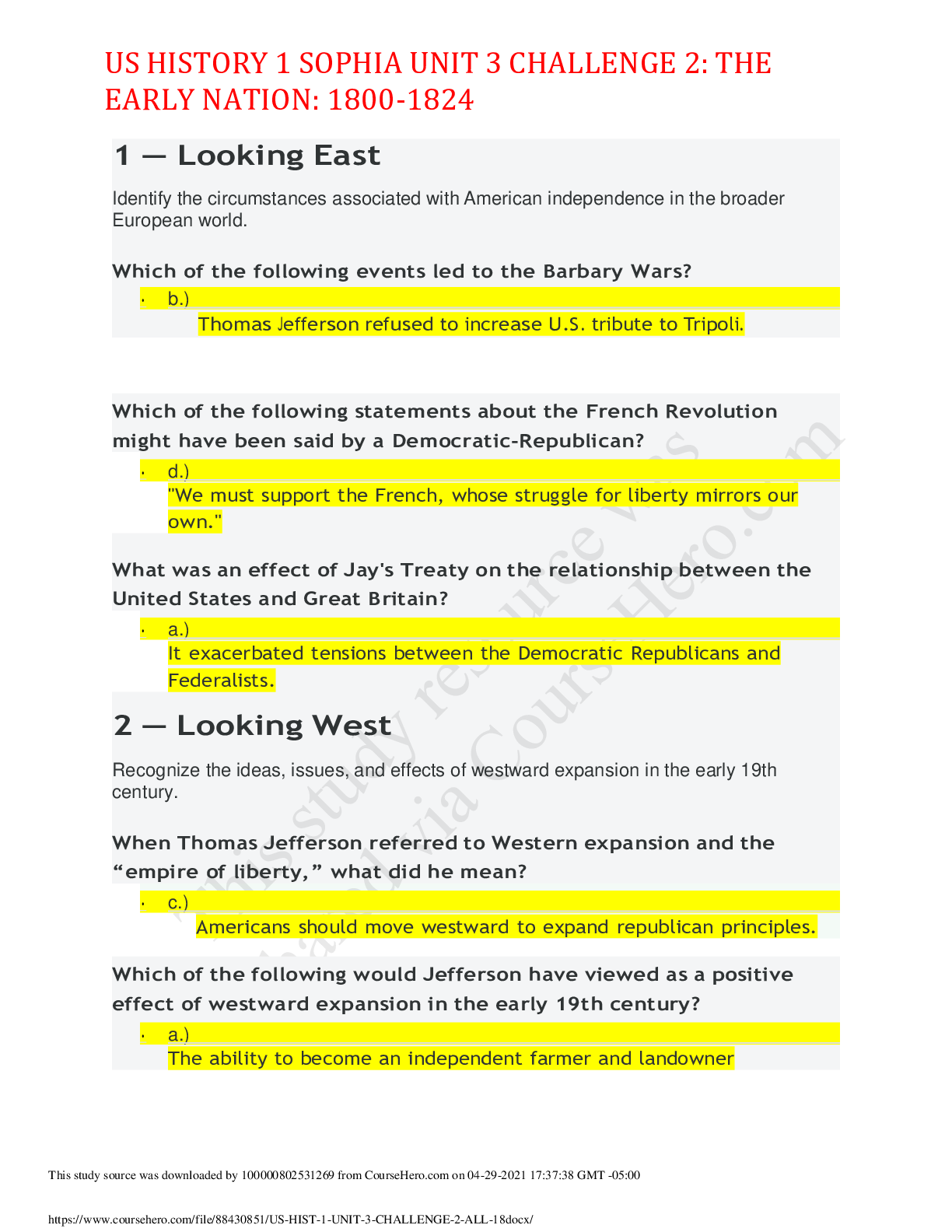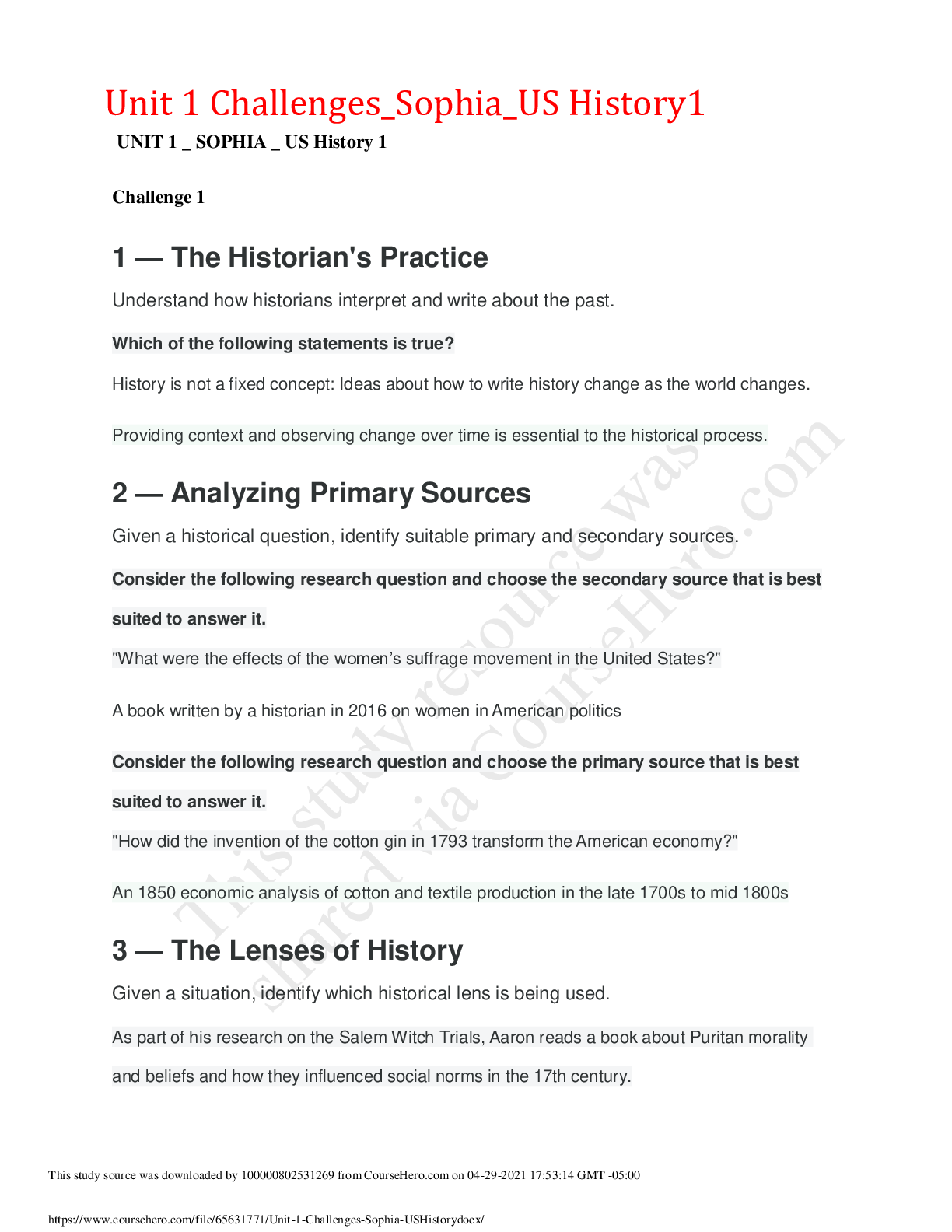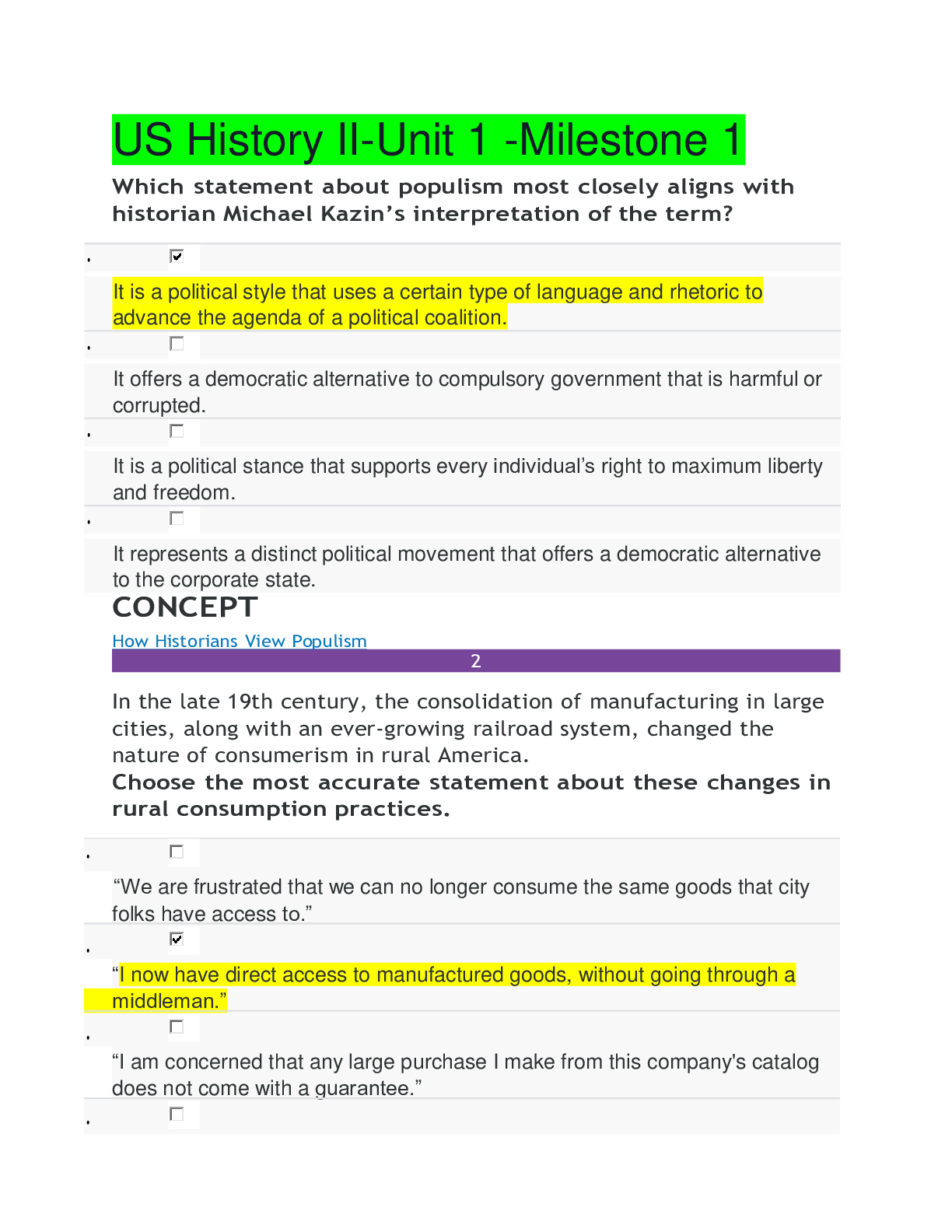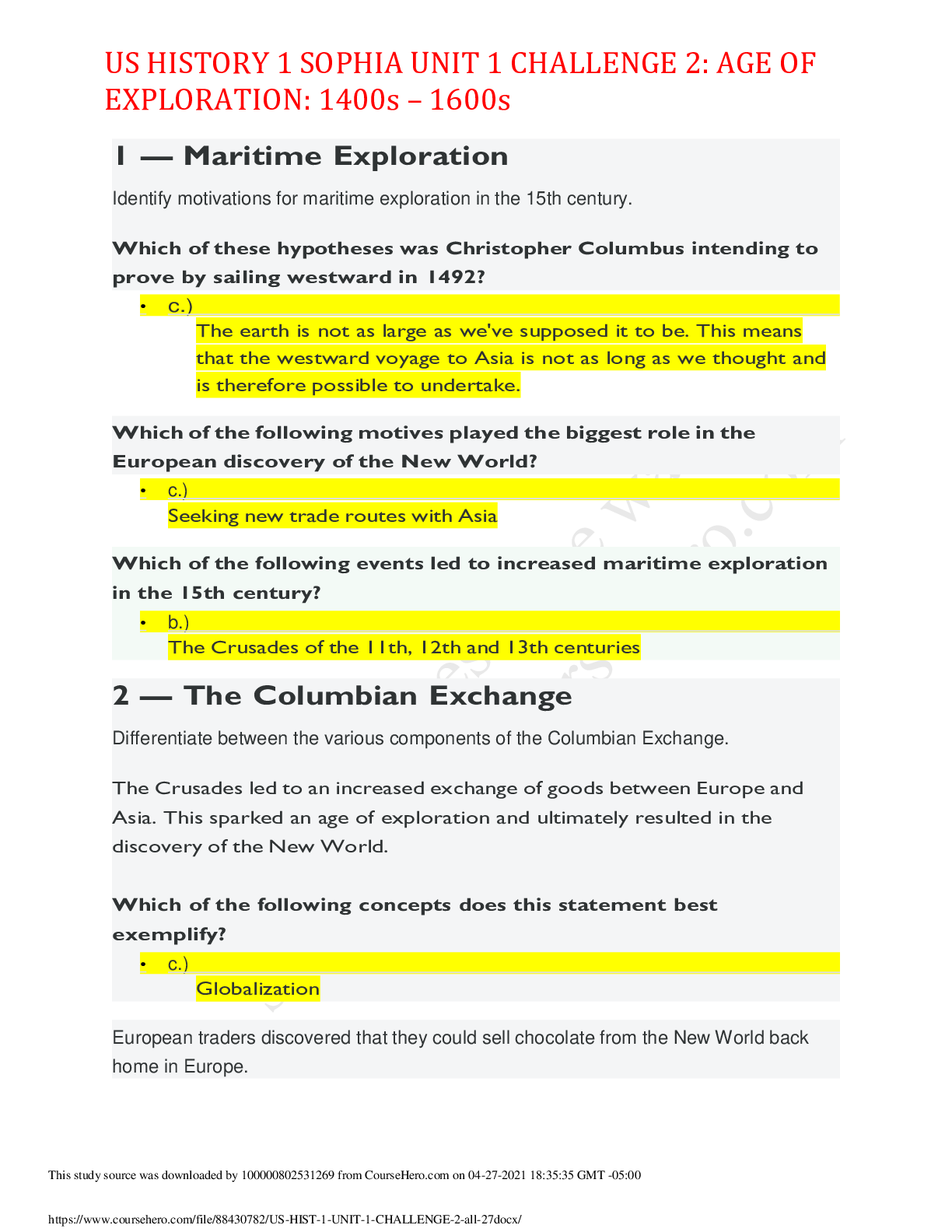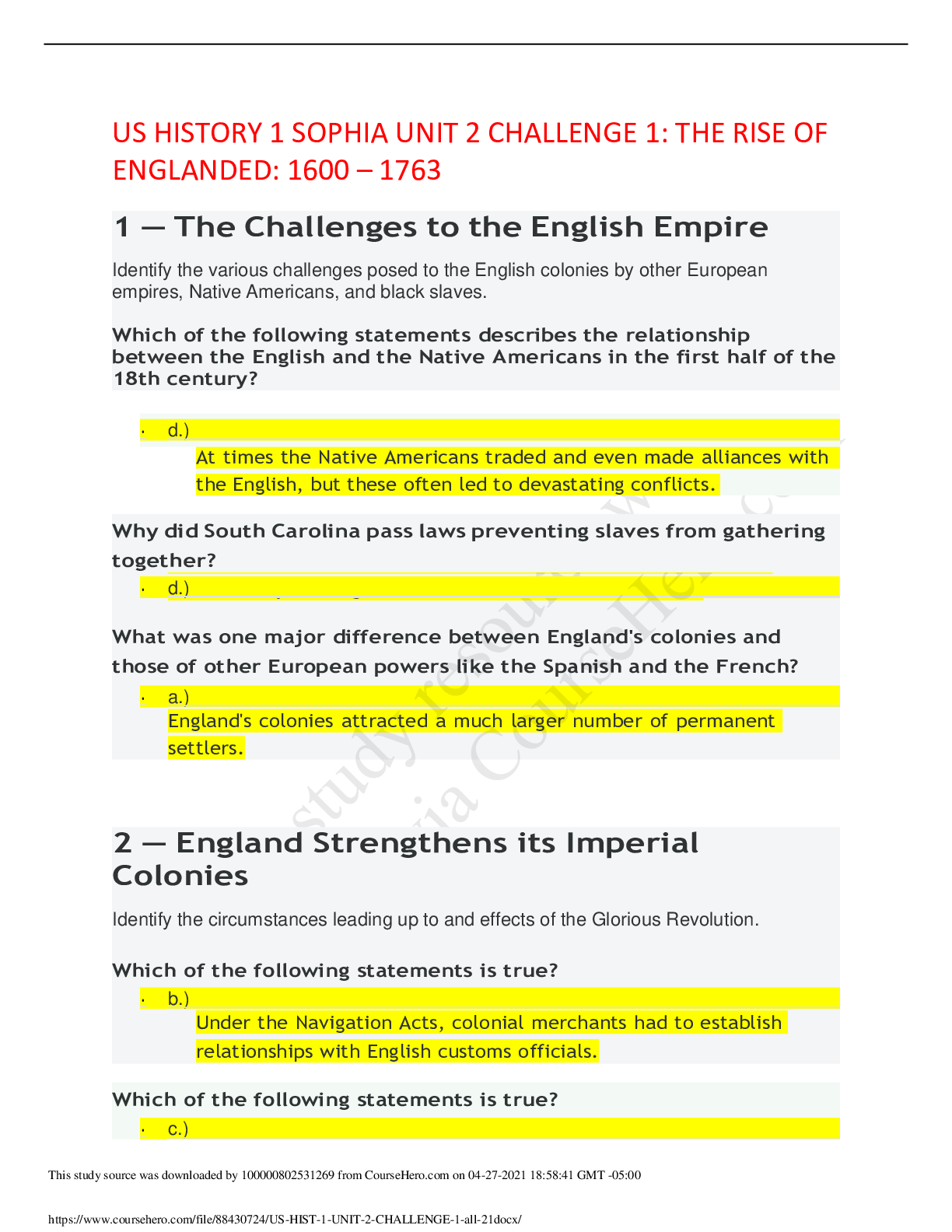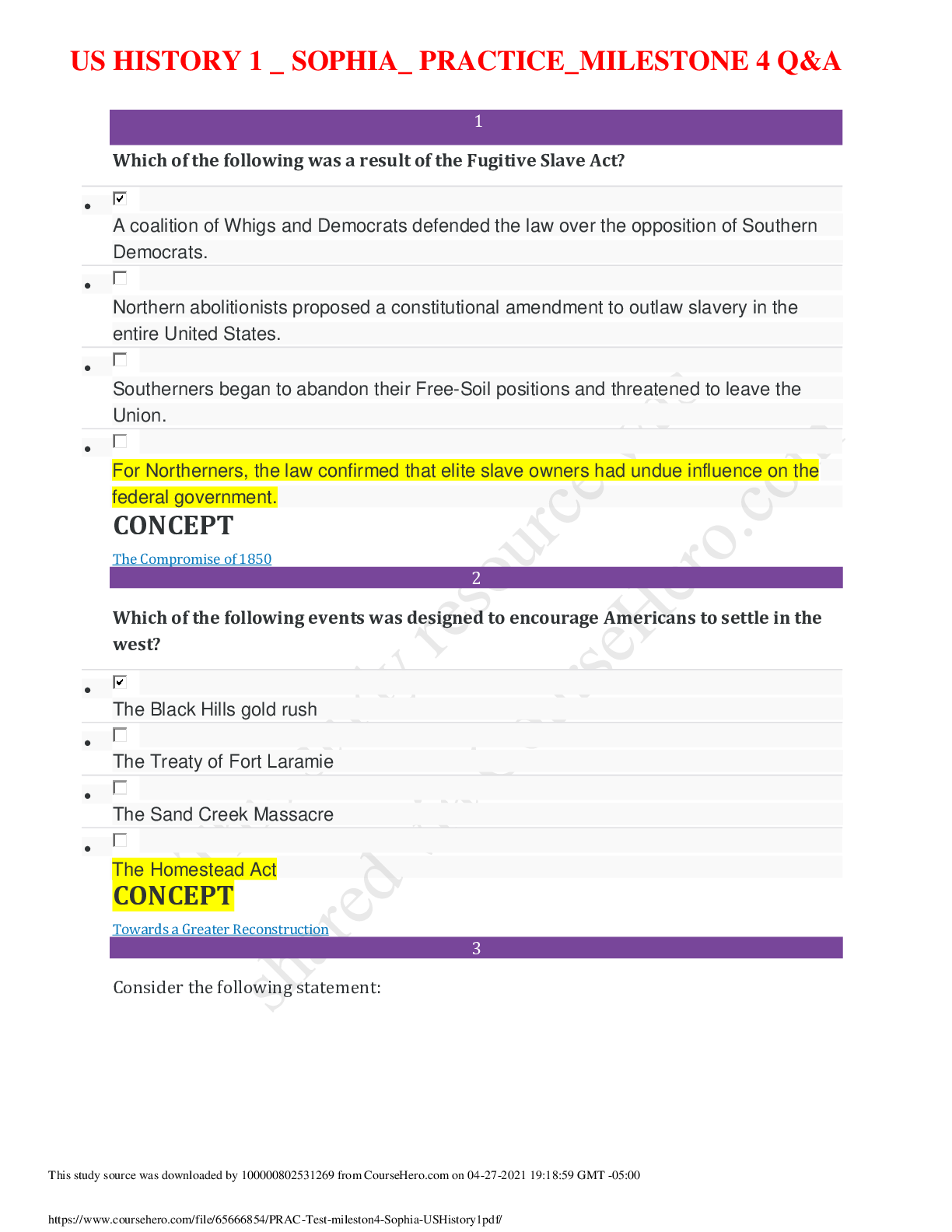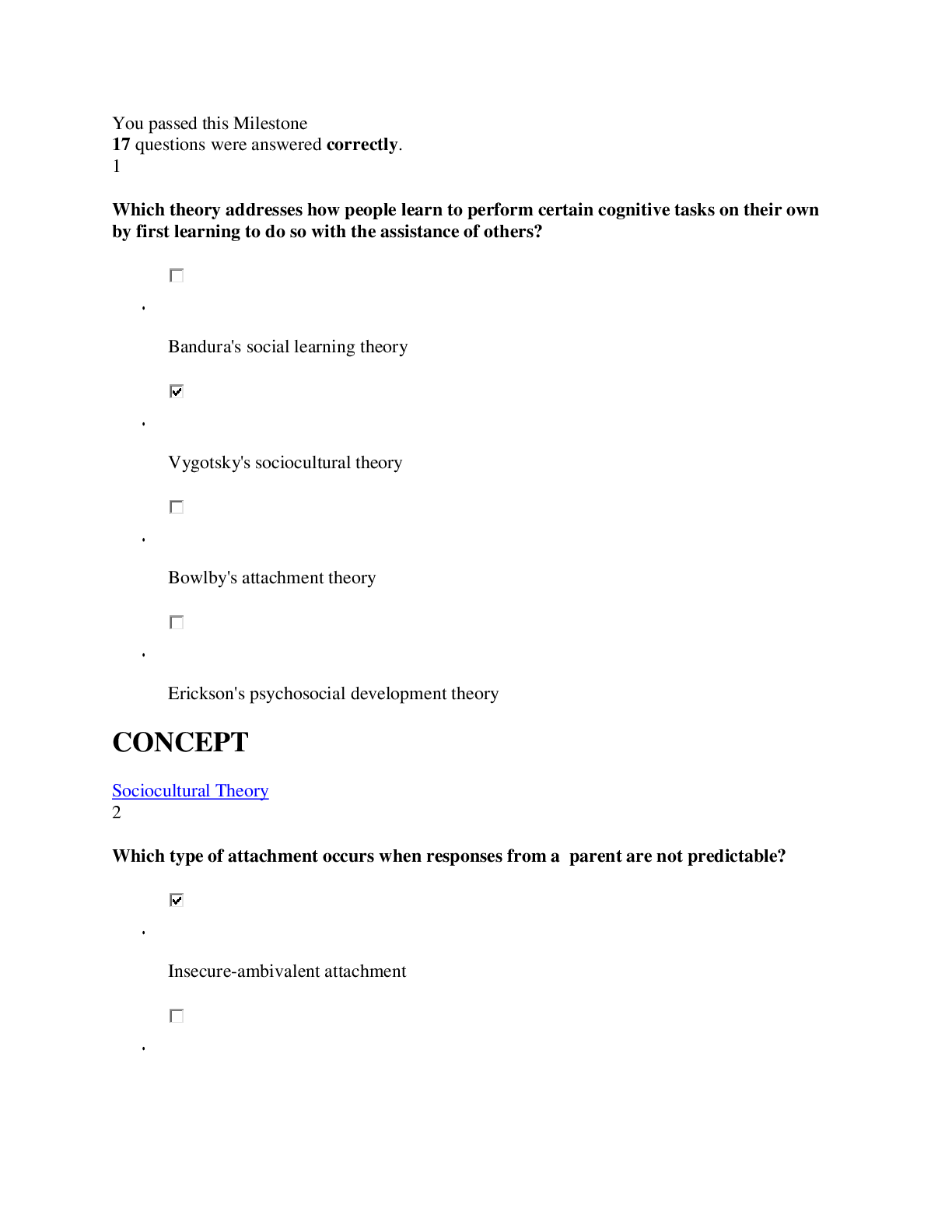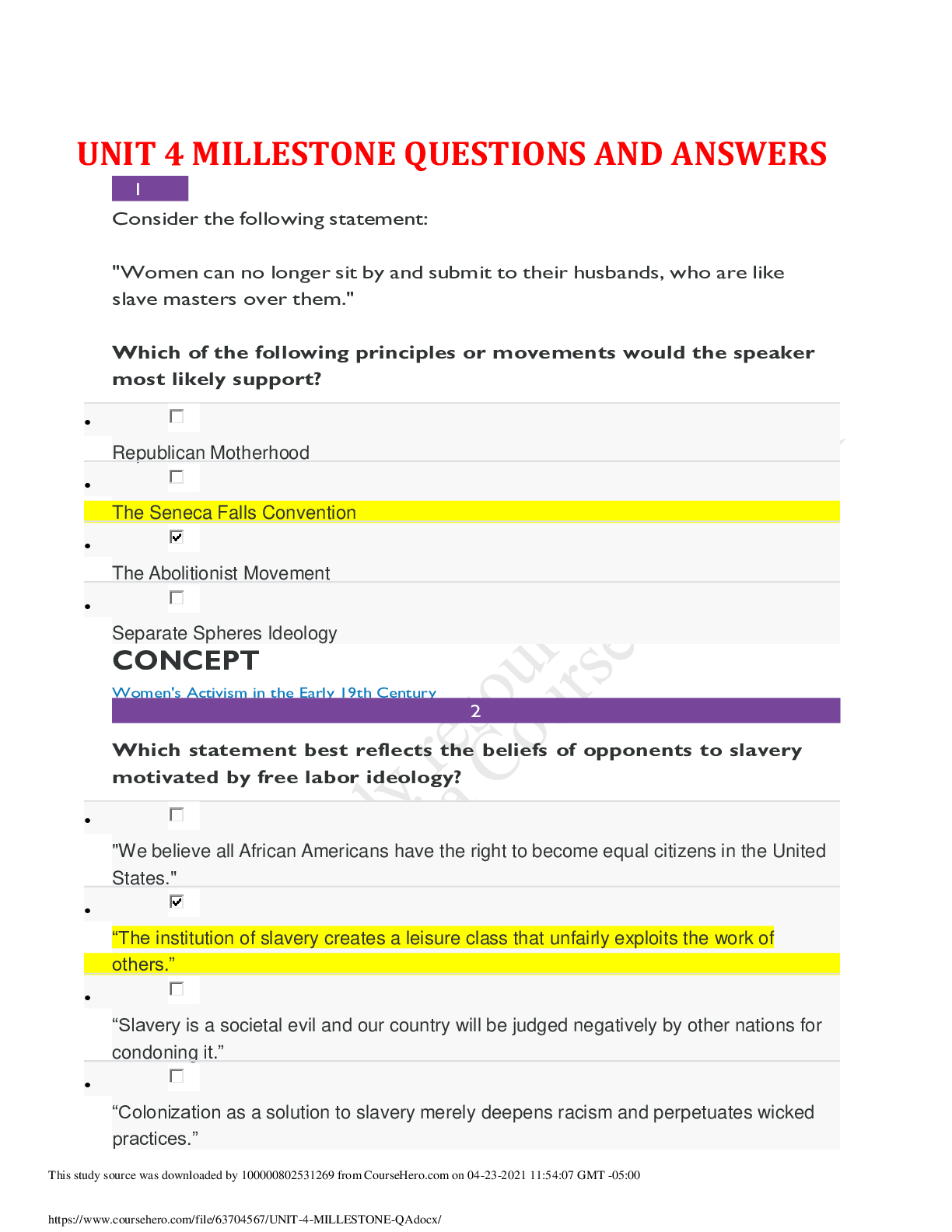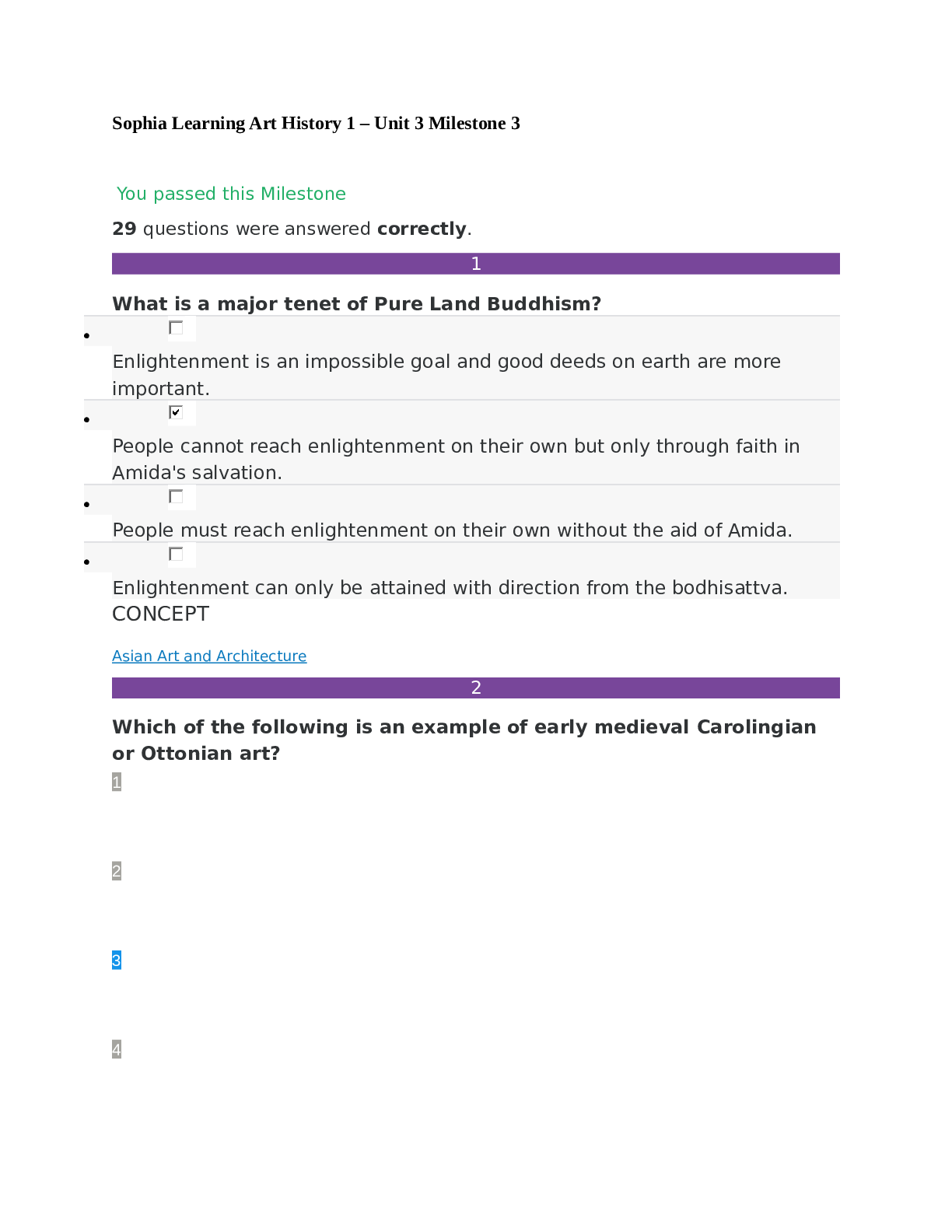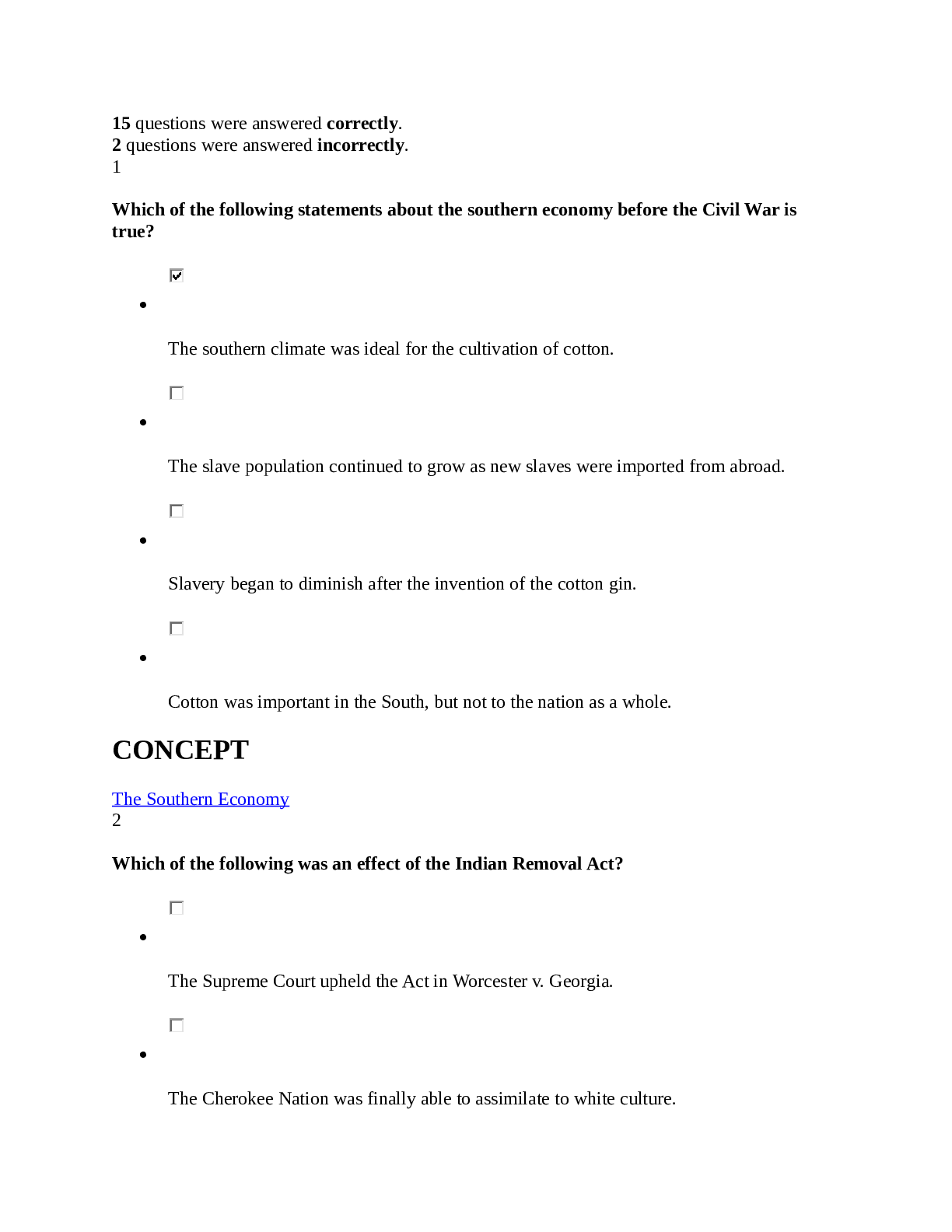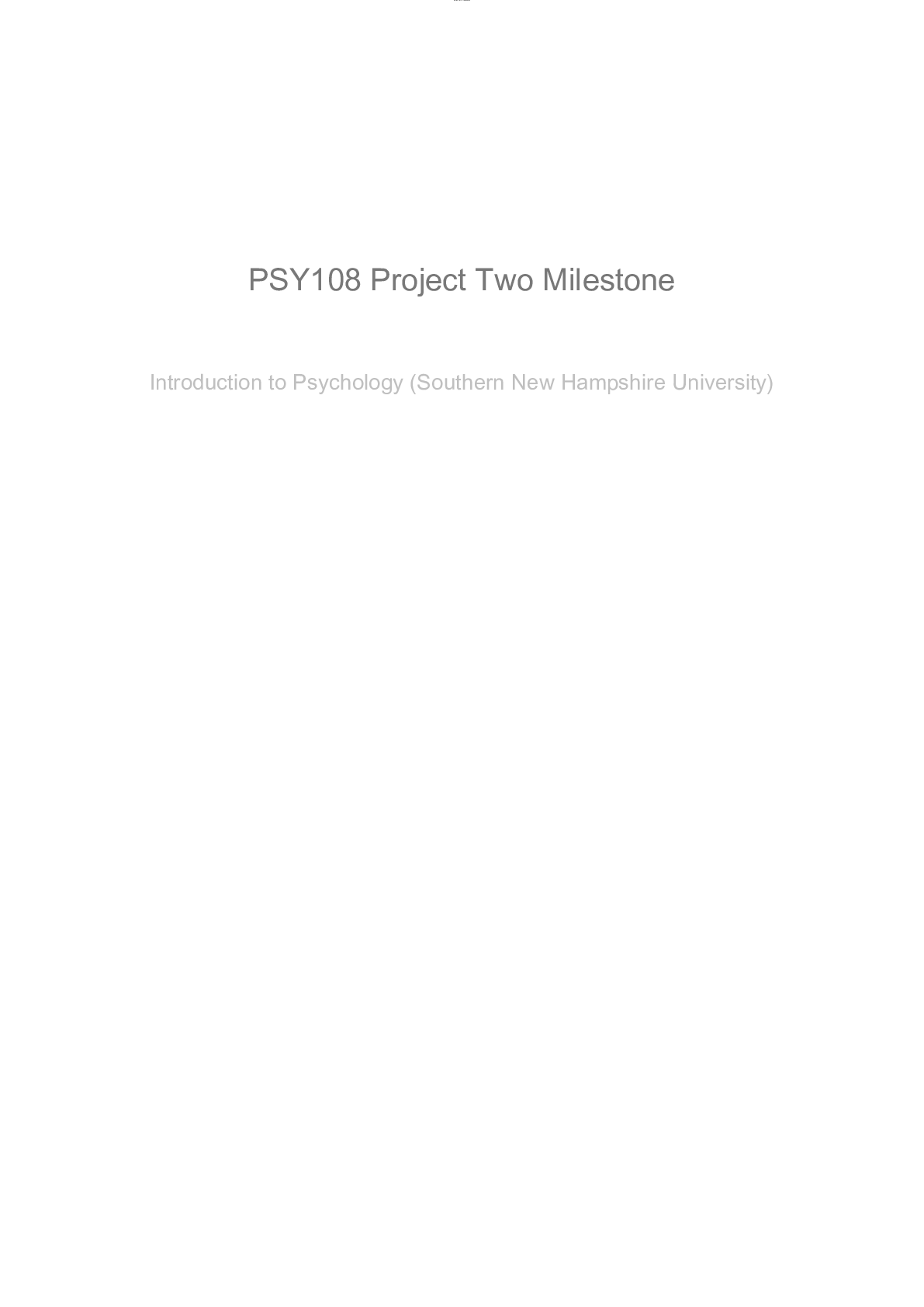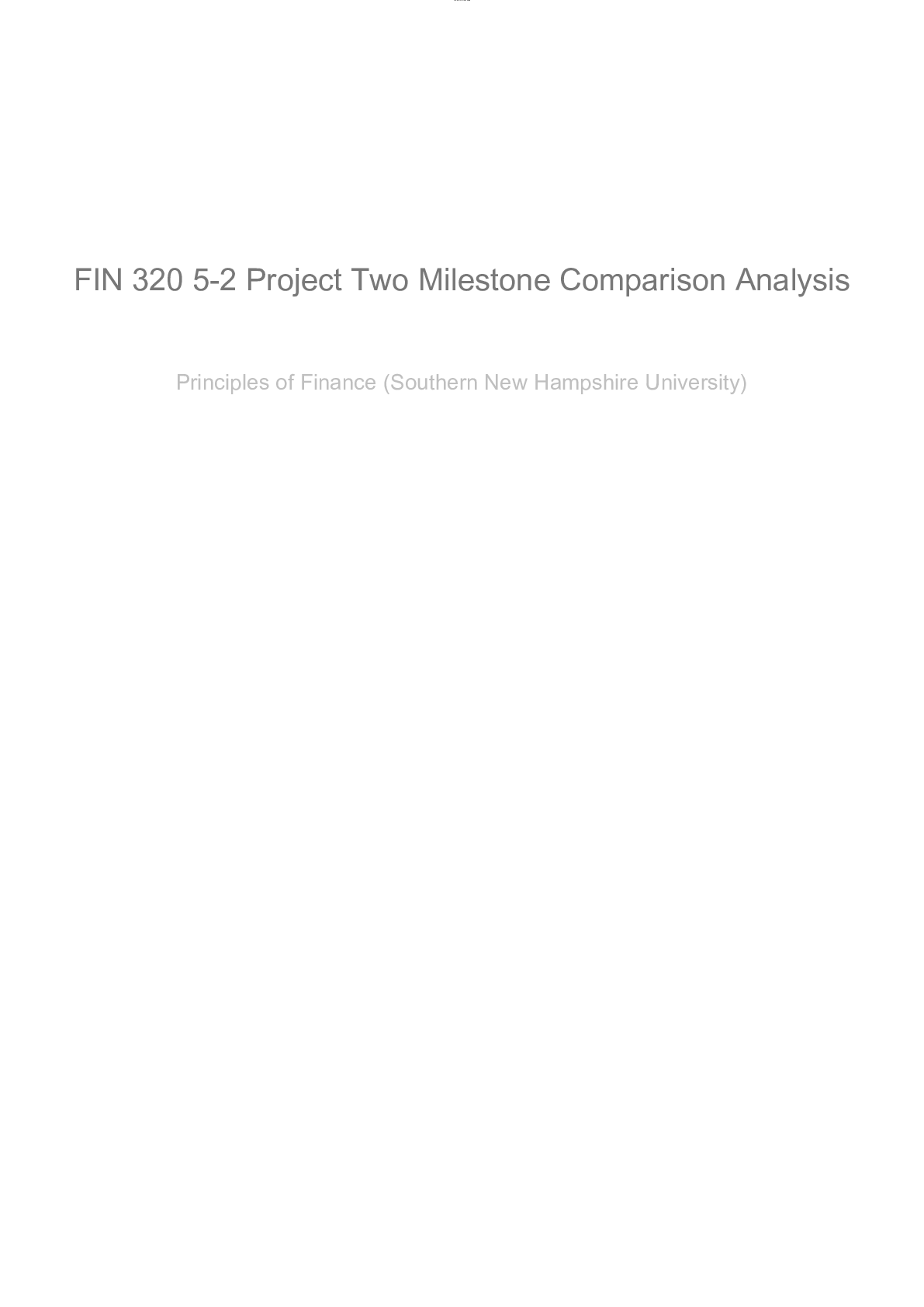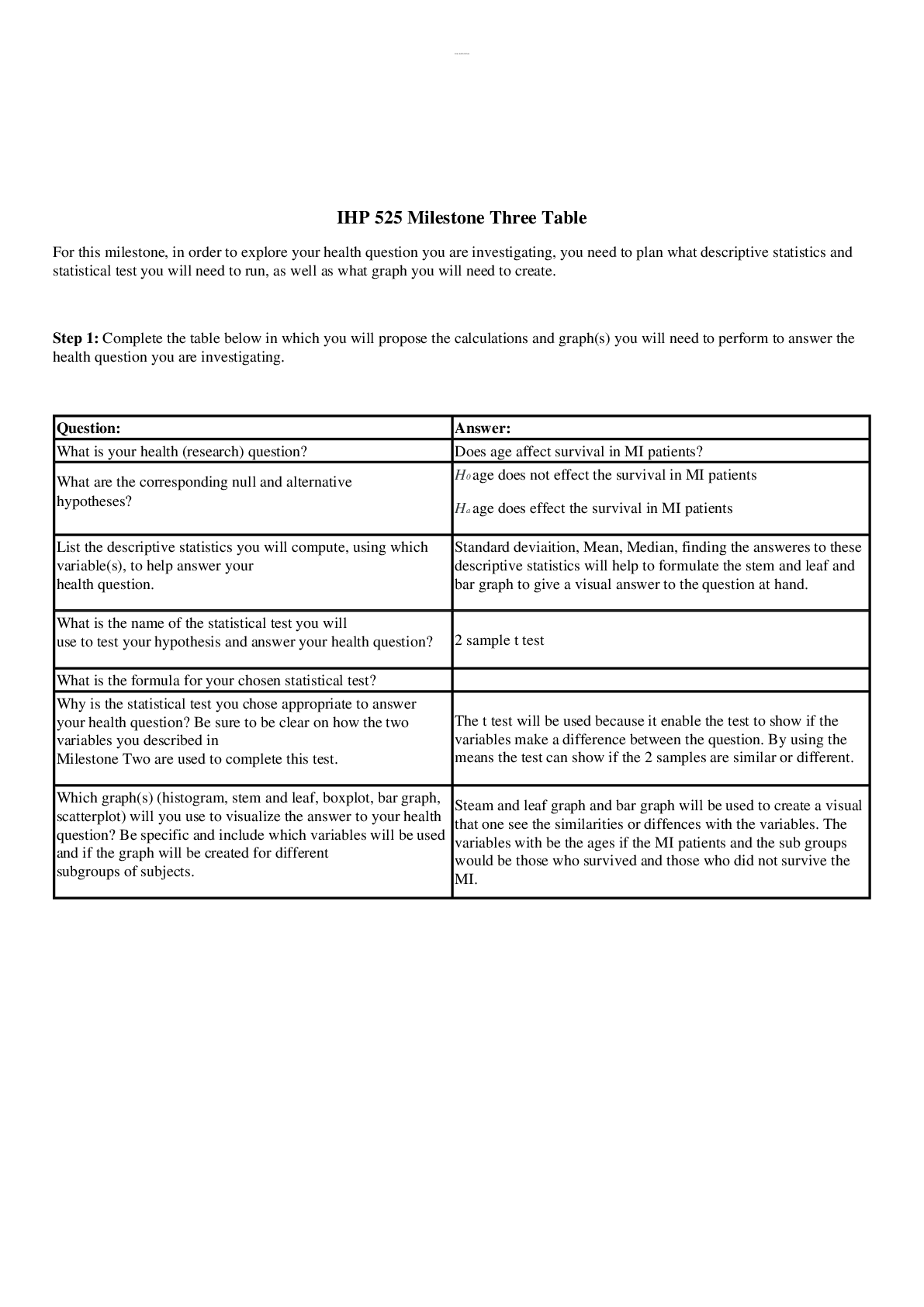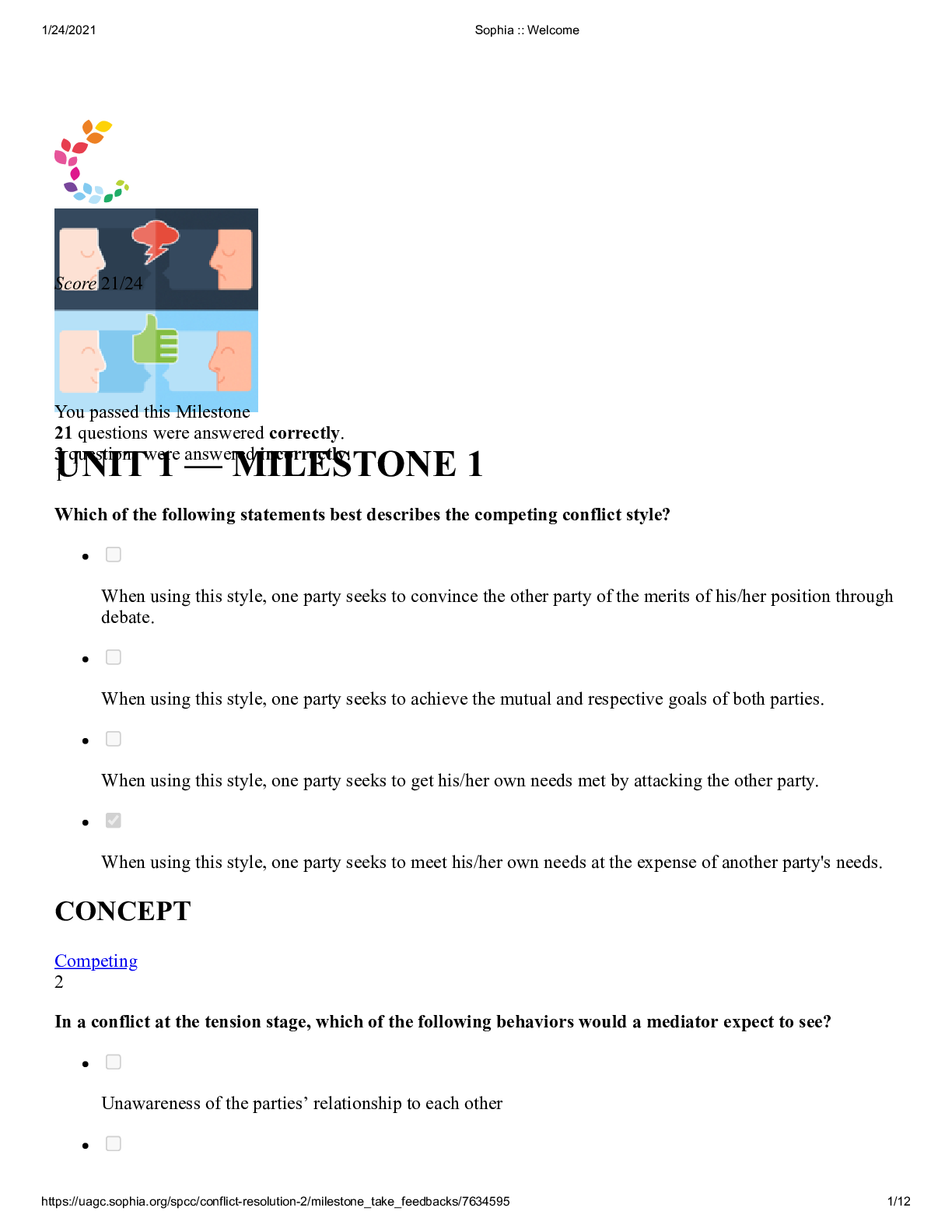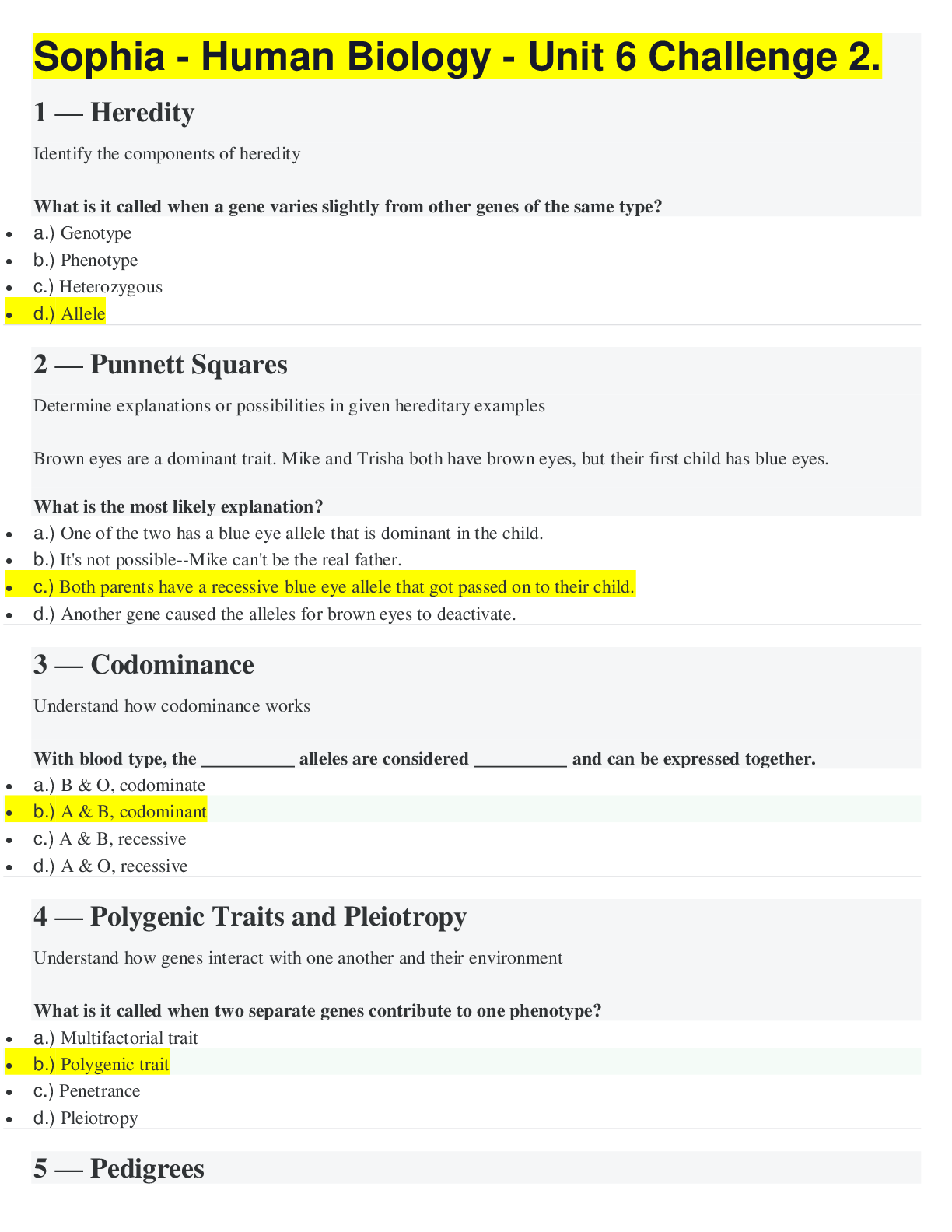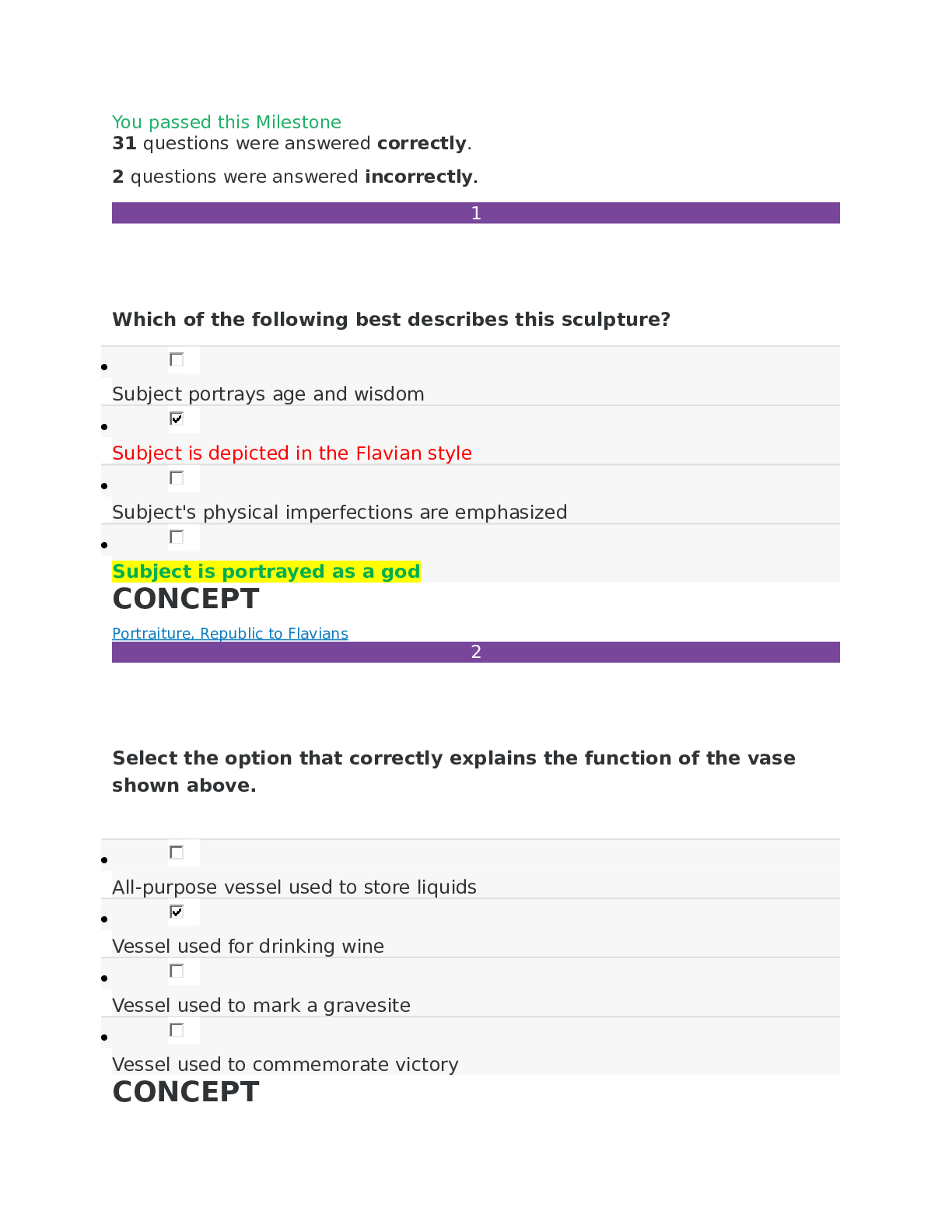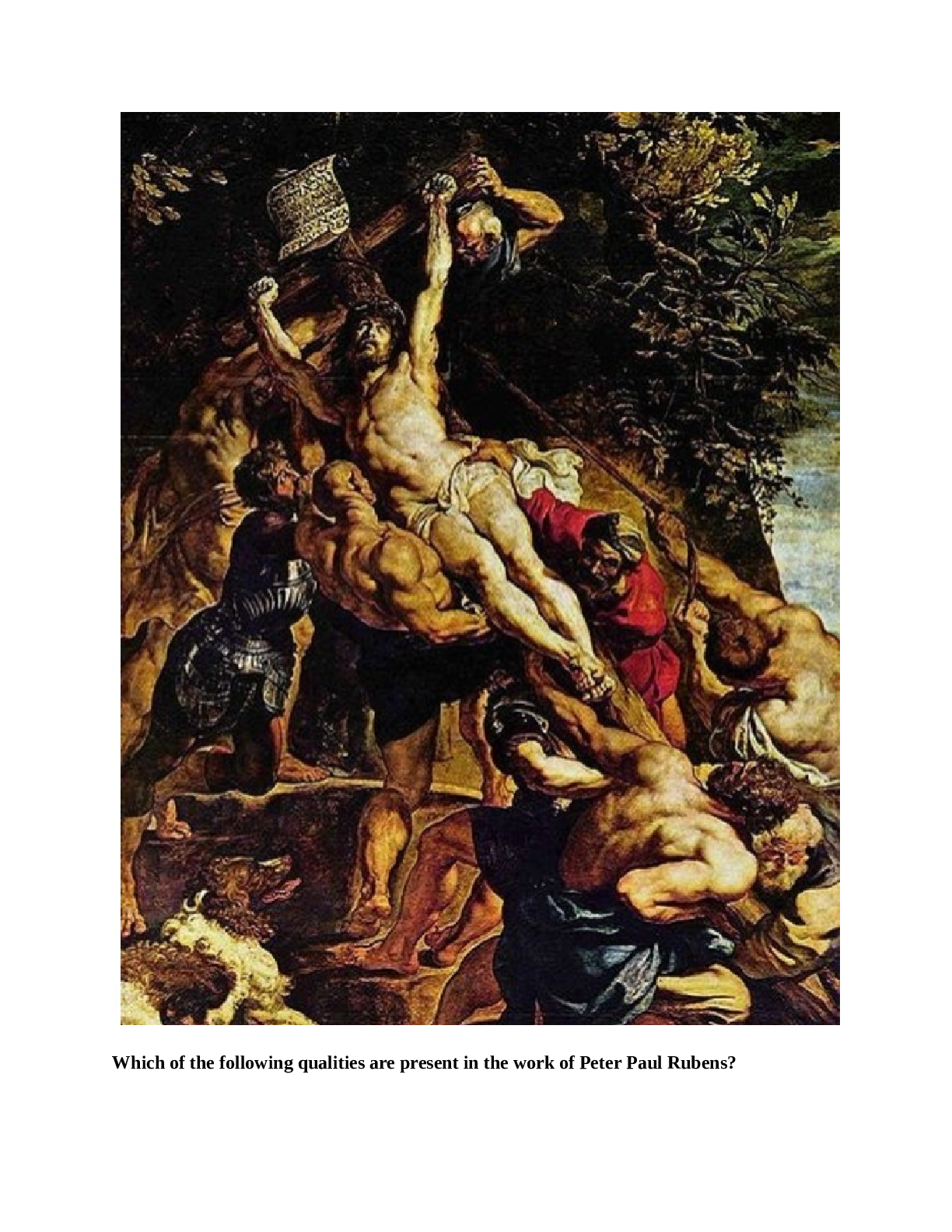Unit 1 - Milestone 1 Questions and Answers,100% CORRECT
Document Content and Description Below
Unit 1 - Milestone 1 Questions and Answers 1) Choose the true statement about the American Federation of Labor. a. It called for equal pay for women and worker ownership of businesses. b. It welc... omed common factory laborers into its ranks. c. It was led by Uriah Stephens. d. It focused on the economic advancement of its members. 2) Which statement about populism most closely aligns with historian Lawrence Goodwyn’s interpretation of the term? a. It was the idea that production, distribution and exchange were equally shared by rich and poor alike. b. It was a political stance that emphasized free enterprise and minimal governmental intervention. c. It was a political movement that offered an alternative to the political-economic order of the Gilded Age. d. It was a political style that used language to convince others to endorse the views being voiced. 3) Which list of activities best represents the basic practices of historians? a. Maintaining consistency in historical narratives over time, asking questions about the future, insisting on a single narrative for the past and referencing strongly biased secondary sources b. Maintaining consistency in historical narratives over time, interpreting evidence from the past, remaining objective and referencing strongly biased secondary sources c. Creating narratives about the past, interpreting evidence from the past, remaining objective and selecting relevant primary and secondary sources d. Maintaining consistency in historical narratives over time, asking questions about the future, remaining objective and stating personal opinions about the past 4) Choose the true statement about the nature of the rural economy in the late 19th century. a. Most farmers grew wheat or cotton because that was all they could afford to grow. b. Sharecroppers often worked a plot of land for several years and were then able to purchase it. c. Many poor farmers owned abundant land but lacked the money and tools to develop it. d. Farmers endured hardship during the Gilded Age but were unable to organize collectively to improve their situation. Consider the excerpt from a speech given by the former slave and abolitionist Frederick Douglass: "I have had but one idea for the last three years to present to the American people, and the phraseology in which I clothe it is the old abolition phraseology. I am for the 'immediate, unconditional, and universal' enfranchisement of the black man, in every State in the Union. [Loud applause.] Without this, his liberty is a mockery; without this, you might as well almost retain the old name of slavery for his condition; for in fact, if he is not the slave of the individual master, he is the slave of society, and holds his liberty as a privilege, not as a right. He is at the mercy of the mob, and has no means of protecting himself." 5) Which question would be most relevant for analyzing this historical speech? a. How long is the speech? b. How many people were in the audience? c. Where has this speech been reprinted? d. What was the purpose of the speech? Several ideologies—social Darwinism, the self-made man and the Gospel of Wealth—emerged in the Gilded Age. 6) Choose the person from the Gilded Age whose ideas are reflected in this statement: "There is a difference between the deserving and the undeserving poor." a. Andrew Carnegie b. Henry George c. Herbert Spencer d. Mark Twain Because of the economic downturn in the 1890s, many Americans organized to seek relief from corporations and elected officials. 7) Choose the statement that best reflects how farmers responded to the crises of the 1890s. a. They viewed the financial crisis as a result of the Sherman Silver Purchase Act and supported its repeal. b. They continued to face debt and marginalization in the modern economy and sought an alliance with industrial workers. c. They engaged in a gunfight with Pinkerton detectives and killed several of them. d. They had little sympathy for workers’ protests for relief. Consider this political cartoon from 1891 that depicts Uncle Sam in front of a crowd of immigrants. A judge tells Uncle Sam, "If Immigration was properly Restricted you would no longer be troubled with Anarchy, Socialism, the Mafia and such kindred evils!" Some of the labels on the immigrants include: “German socialist,” “Polish vagabond,” and “English convict.” 8) Choose the statement that best reflects how new immigrants to America were viewed by citizens as illustrated in the cartoon. a. "Lots of immigrants arriving so quickly encourages current citizens to turn to crime rather than compete for jobs." b. "So many immigrants will strain the available land resources in America." c. "These new immigrants bring fresh ideas that will reinvigorate our ailing democracy." d. "All these new immigrants are troublemakers that will harm our country." 9) What was the effect of the Supreme Court decision in the case of Plessy v. Ferguson? a. It affirmed that federal rights differed from state rights and states could discriminate according to their own laws. b. It determined the Civil Rights Act of 1875 was unconstitutional and unenforceable for private businesses. c. It confirmed the policy of “separate but equal” in the public sphere. d. It narrowed the 14th Amendment by arguing the obligation to enforce it lay with the states, not the federal government. By the late 1800s, some settlers’ dreams of the West were not matched by the realities. 10) Choose the statement that describes one of these “realities.” a. “The establishment of bonanza farms offers opportunities to work the land for a wage.” b. “I will be self-sufficient because all I need is the land to profit from my own labor.” c. “I will succeed as a hard-working individual because I will have the freedom to do as I wish.” d. “It is my destiny as a white American to claim and tame this rugged landscape.” Rosemary is curious about the history of the Amish in America and begins her research at the library. As a historian, she is aware of possible influences on her interpretation of events. 11) Which factor should be allowed to influence her interpretation? a. Her personal bias toward the Amish b. The historical question she wants to ask c. What her conclusion will be d. The language she uses 12) Which statement best reflects the significance of the election of 1896? a. Ties between the Republican Party and big businesses weakened due to populist pressure. b. The Populist Party ceased to exist as an independent political entity following the election. c. Bryan won the popular vote, but McKinley won the electoral college by a slim margin. d. The election led to the resumption of minting silver. 13) Choose the most accurate statement about the nature of politics in the Gilded Age. a. Corruption and inefficiency were hallmarks of politics in this time period. b. Politics at the national level was polarized over issues primarily related to race and income inequality. c. Candidates for local office promised reform and an end to corruption. d. The Republican Party began to dominate national politics. A meat packing plant buys a smaller meat packing plant and lowers prices to effectively run another out of business. It then strikes a deal with the railroad to transport the meat at a lower price and gains control of the meat market. 14) What aspect of industrialization does this represent? a. A holding company b. Vertical integration c. A trade d. Horizontal integration 15) Choose the factor that was most likely an effect of rapid industrialization in the United States during the late 19th century. a. Grants of public lands to railroad companies b. Increased reliance on local shops and markets c. New infrastructures in large cities, such as elevated trains d. Communication advances such as the telegram 16) What was the philosophy behind the Social Gospel? a. It is vitally important that the conditions of the working poor living in slums and tenements be documented and shared. b. Help the working class, particularly women with children, with health care and education. c. Those who give themselves over to God and agree to help themselves deserve assistance from the church. d. Religious leaders, as well as ordinary Americans, must work together to support individuals from all class backgrounds. 17) Choose the statement that best reflects an argument used by Chief Joseph to oppose federal assimilation. a. "The government is not planning to provide us with enough land to grow crops." b. “If the white man wants to live in peace with us, we only ask that all men are treated equal and are subject to the same laws.” c. “Indians must conform to American society in order to grow and advance as a people.” d. “Indians want to live in peace and we are willing to forego our traditions in order to do so.” 18) Which of the following were goals of the Populist Party in the late 19th century? a. To deregulate the banking industry b. To lessen government influence in citizens' lives c. To abolish labor unions d. To promote government ownership of the railways In the summer of 1893, a young historian, Frederick Jackson Turner, presented a paper that explained his views on the significance of the frontier in American history. 19) Choose the statement that best reflects Turner’s views on the significance of the Western frontier. a. Turner included women in his argument, rejecting the myth that the West was only for rugged, masculine individuals. b. Turner acknowledged how the Western environment required the development of settlement patterns and social structures that fundamentally differed from those in the East. c. Turner maintained that individual settlers and Native American tribes interacted with one another and created societies that were unique to the frontier. d. Turner believed that frontier expansion paralleled the economic and social organizations that already existed in the Eastern United States. 20) Choose the statement that best characterizes the "Old South" rather than the "New South." a. The Southern economy rested exclusively on slave labor. b. Railroads fostered the development of textile mills and other industries. c. The Supreme Court legitimized racial segregation. d. Laws that allowed separate facilities for whites and blacks became common. Read the newspaper excerpt from The Indianapolis Journal quoting Jay Gould about the 1886 railroad strike. "There is no room for a compromise, for the strikers have confessed, in effect, that they have no grievances against our company. I am bound to fight this question to the bitter end for this very reason. The position is a simple one; if we had interfered with the management of the Texas Pacific we should have been in contempt of the United States Court which has charge of that road. The men on our own lines have made no complaint against us, but by striking try to enforce the demands of workmen on another road not under our control. There can be no compromise of such a strike. I have asked the opinion of Judge Dillon as to our legal rights under such circumstances, and his decision is that it is our duty, not alone our right, to prevent the interruption of the business of the road by all legal means." 21) Jay Gould's comments most likely represent what group's perspective? a. Labor organizers b. Union workers c. Business leaders d. Police officers In the late 19th century, the consolidation of manufacturing in large cities, along with an ever-growing railroad system, changed the nature of consumerism in rural America. 22) Choose the most accurate statement about these changes in rural consumption practices. a. “I now have direct access to manufactured goods, without going through a middleman.” b. “We are frustrated that we can no longer consume the same goods that city folks have access to.” c. “I am concerned that any large purchase I make from this company's catalog does not come with a guarantee.” d. “Our local shopkeepers compete quite well with the mail-order catalog companies.” 23) Which of these is an example of a secondary source for historical research on President Theodore Roosevelt? a. A biography of Theodore Roosevelt b. A photograph of Theodore Roosevelt fighting in the Spanish-American War c. Government voting records from the 1900 election d. A political cartoon from the 1900s about Theodore Roosevelt's foreign policies 24) If a historian were to question why most of the immigrants coming into the United States were pictured as male, when large numbers of females also immigrated to the United States, they would probably be viewing this picture through which lens? a. Race b. Economics c. Gender d. Technology [Show More]
Last updated: 1 year ago
Preview 1 out of 13 pages

Reviews( 0 )
Document information
Connected school, study & course
About the document
Uploaded On
Apr 28, 2021
Number of pages
13
Written in
Additional information
This document has been written for:
Uploaded
Apr 28, 2021
Downloads
0
Views
59

